Your cart is currently empty!
Month: July 2024
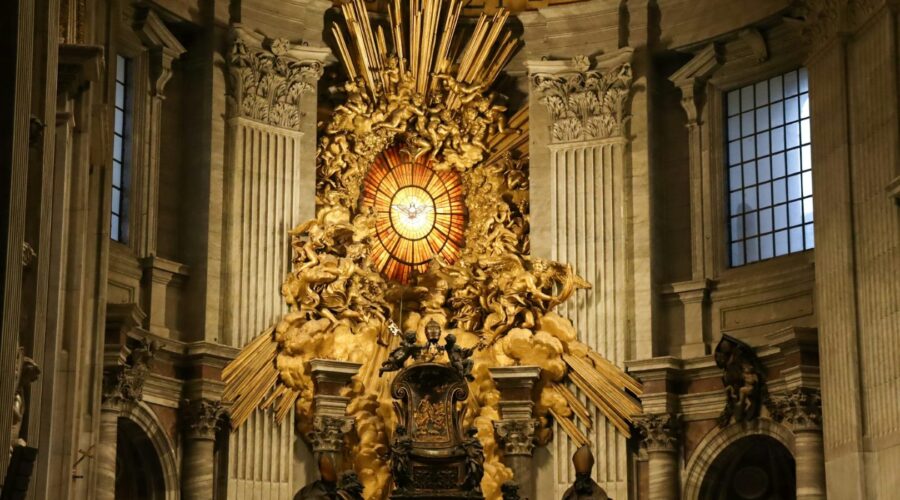
Discover the Enchanting History and Architectural Marvel of San Agustin Church
Introduction
Nestled in the heart of Intramuros, the historic Walled City of Manila, San Agustin Church stands as a testament to the rich religious and architectural heritage of the Philippines. Founded in 1571, it is the oldest stone church in the country and a UNESCO World Heritage Site. This blog post will delve into the fascinating history, remarkable architecture, and enduring legacy of San Agustin Church.
Historical Significance
Early Foundations
The origins of San Agustin Church can be traced back to the arrival of the Spanish conquistadors in the 16th century. In 1571, Spanish explorer Miguel López de Legazpi established a permanent settlement in Manila. Recognizing the importance of religious conversion, the Spanish authorities founded San Agustin Church in 1571. Initially constructed as a simple wooden structure, it was later expanded and rebuilt in stone.
Conversion and Colonization
San Agustin Church played a crucial role in the conversion of the Filipino people to Christianity. Augustinian friars used the church as a base for their missionary work. They established schools and hospitals to provide education and healthcare to the local population.
Architectural Splendor
San Agustin Church is renowned for its architectural magnificence. Designed in the Baroque style, it is a masterpiece of Spanish colonial architecture.
Exterior
- Imposing Façade: The grand façade features an elaborate tympanum depicting the life of Saint Augustine. Two bell towers flank the entrance, adding to the imposing presence of the church.
- Intricate Rosettes: The façade is adorned with intricate stone rosettes, a decorative element commonly found in Baroque architecture.
- Gothic Influence: Despite its Baroque style, the church also exhibits Gothic influences, such as the pointed arches and ribbed vaults.
Interior
- Spacious Nave: The interior of the church is spacious and well-lit. The nave is adorned with gold leaf and colorful murals.
- Baroque Altar: The main altar is a stunning example of Baroque art. It features intricate carvings and a painting depicting the Assumption of Mary.
- Elaborate Transepts: The transepts are adorned with side altars, sculptures, and paintings. The transept ceilings are decorated with vibrant frescoes.
Enduring Legacy
San Agustin Church continues to be a significant religious, historical, and architectural landmark in the Philippines.
Religious Heritage
San Agustin Church remains an active Catholic parish. It hosts regular masses, weddings, and other religious services.
Historical Landmark
The church serves as a testament to the Spanish colonial period in the Philippines. It is a popular tourist destination, offering visitors a glimpse into the country’s rich history.
UNESCO World Heritage Site
In 1993, San Agustin Church was inscribed as a UNESCO World Heritage Site. This designation recognizes its outstanding universal value as an example of Spanish colonial architecture and its role in the spread of Christianity in the Philippines.
Visitor Information
San Agustin Church is open to visitors daily from 8:00 AM to 6:00 PM. Guided tours are available upon request.
Location
San Agustin Church is located at General Luna Street, Intramuros, Manila, Philippines.
Admission
Admission to the church is free. However, a donation is suggested to support the maintenance of the site.
Accessibility
The church is wheelchair accessible via a ramp located at the side entrance.
Conclusion
San Agustin Church is an architectural masterpiece that embodies the rich cultural heritage of the Philippines. Its historical significance, stunning architecture, and enduring legacy make it a must-visit destination for anyone interested in history, religion, or art. Whether you are a devout pilgrim or a curious traveler, San Agustin Church awaits you with open arms, offering a glimpse into the Philippines’ fascinating past and a symbol of its vibrant present.
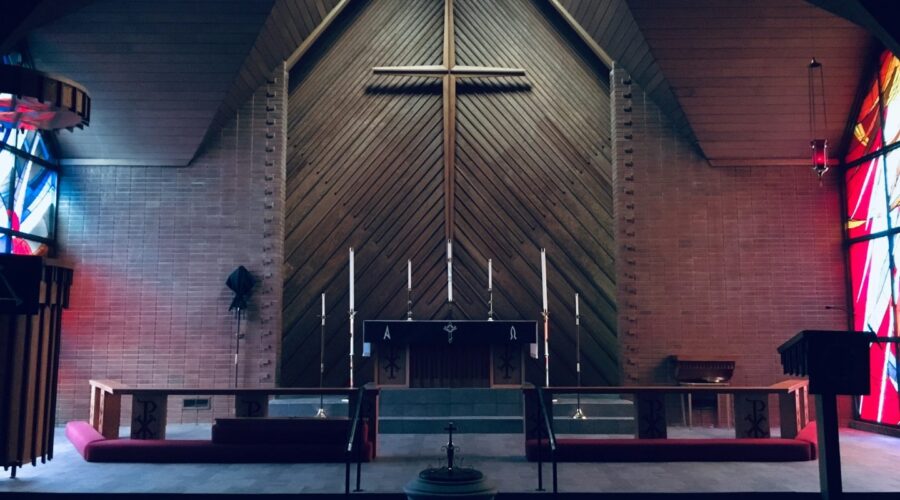
Unlocking the Purpose and Values of Redeemer Bible Church
In the tapestry of Christianity, Redeemer Bible Church stands as a beacon of faith, serving the community for over two decades. With a mission to glorify God through worship, discipleship, and evangelism, the church has witnessed countless lives transformed and hearts filled with the love of Christ. This comprehensive guide unveils the captivating story of Redeemer Bible Church, exploring its rich history, unwavering values, and transformative impact.
A Legacy of Faith: Redeemer’s Journey
Redeemer Bible Church was founded in 1997 with a humble gathering of around 150 people. Guided by the vision of Senior Pastor Tim Keller, the church quickly gained traction, expanding to multiple campuses throughout New York City and beyond. Keller’s renowned preaching and deep commitment to biblical exposition fueled the church’s growth, making it one of the most influential churches in the United States.
A Gospel-Centered Approach
At the heart of Redeemer Bible Church lies a unwavering belief in the gospel of Jesus Christ. The church’s teachings and ministries revolve around the transformative power of the gospel, which brings reconciliation with God, forgiveness of sins, and eternal life. Through sermons, small groups, and outreach programs, Redeemer strives to make the gospel accessible to seekers and believers alike.
Values that Anchor the Church
Redeemer Bible Church is anchored by a set of core values that guide its mission and shape its community. These values include:
- Biblical Faithfulness: Adherence to the authority and inerrancy of Scripture as the foundation for all beliefs and practices.
- Gospel-Centeredness: A deep conviction in the saving power of the gospel and its transformative impact on individuals and society.
- Doctrinal Soundness: Commitment to historic Christian orthodoxy, including the Trinity, the deity of Christ, and the resurrection.
- Intentional Discipleship: A strong emphasis on equipping believers for spiritual growth and service through mentorship, small groups, and discipleship pathways.
- Evangelistic Passion: A fervent desire to share the gospel with the lost and unchurched, both locally and globally.
Transforming Lives through Ministry
Redeemer Bible Church offers a wide range of ministries to cater to the diverse needs of its congregation and the surrounding community. These ministries include:
- Worship Services: Inspiring and engaging worship experiences that exalt God and proclaim the gospel through music, prayer, and preaching.
- Small Groups: Intimate gatherings that provide opportunities for fellowship, Bible study, and spiritual growth in a supportive environment.
- Discipleship Programs: Structured pathways that equip believers with biblical knowledge, practical skills, and spiritual disciplines.
- Outreach Initiatives: Compassionate and practical ministries that serve the poor, marginalized, and vulnerable in the community.
- Global Missions: A commitment to supporting and partnering with missionaries around the world to spread the gospel and impact communities.
Impact on the Community and Beyond
Redeemer Bible Church’s impact extends far beyond its physical campuses. The church has played a significant role in shaping the religious and social landscape of New York City and beyond. Through its various ministries and initiatives, Redeemer has:
- Revitalized urban communities: Partnering with local organizations to address poverty, improve education, and provide social services.
- Trained and equipped leaders: Providing theological education and leadership development programs that impact churches and Christian organizations worldwide.
- Influenced public discourse: Engaging in thoughtful and respectful conversations about faith, culture, and social issues.
- Planted daughter churches: Establishing new churches in New York City and other major cities to extend the reach of the gospel.
Conclusion: A Beacon of Faith in the City
Redeemer Bible Church stands as a vibrant and transformative force in the heart of New York City. Rooted in unwavering biblical faith and anchored by enduring values, the church continues to make a profound impact on individuals, communities, and the broader society. Through its gospel-centered approach, diverse ministries, and commitment to serving others, Redeemer Bible Church remains a beacon of hope and a testament to the enduring power of the Christian faith.
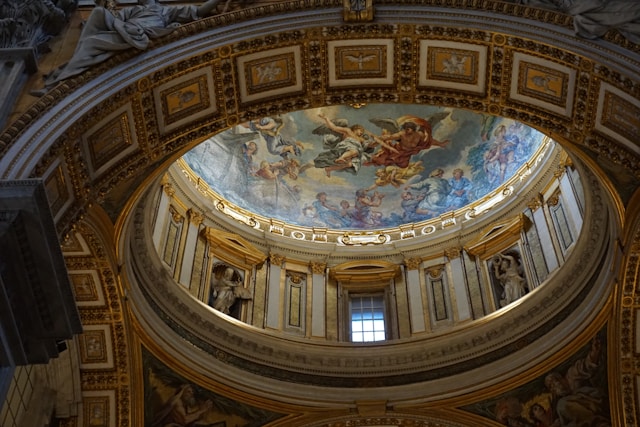
Ash Wednesday Service Near Me: Find a Meaningful Experience
What is Ash Wednesday?
Ash Wednesday marks the beginning of Lent, a 40-day period of fasting, prayer, and reflection leading up to Easter. It falls on the first day of Lent, which is typically a Wednesday that occurs 46 days before Easter Sunday.
The Significance of Ash Wednesday
Ash Wednesday is a time for Christians to:
*
- Remember their mortality
- Repent of their sins
- Seek God’s forgiveness
- Prepare their hearts for the Easter season
Ash Wednesday Rituals
Ash Wednesday services typically include:
*
- A sermon on the themes of repentance and forgiveness
- Prayer and meditation
- The imposition of ashes on the foreheads of worshippers
The Imposition of Ashes
The imposition of ashes is a symbolic act that represents:
*
- Mourning and repentance for sins
- Recognition of human mortality
- Hope for redemption through Christ
How to Find an Ash Wednesday Service Near You
There are several ways to find an Ash Wednesday service near you:
*
- Check with your local church
- Visit the websites of Christian denominations in your area
- Use online directories such as Google Maps or Eventbrite
- Ask friends or neighbors for recommendations
Tips for Choosing an Ash Wednesday Service
When choosing an Ash Wednesday service, consider the following factors:
*
- Location: Choose a service that is convenient for you to attend.
- Time: Select a service that fits into your schedule.
- Denomination: If you have a preference for a particular Christian denomination, look for services offered by that denomination.
- Atmosphere: Some services are more traditional, while others are more contemporary. Choose a service that suits your preferences.
Benefits of Attending an Ash Wednesday Service
Attending an Ash Wednesday service can provide several benefits, including:
*
- A sense of community and support
- An opportunity to reflect on your spiritual journey
- A reminder of the importance of repentance and forgiveness
- A chance to prepare your heart for the Easter season
Frequently Asked Questions
Q: What time do Ash Wednesday services typically start?
A: Most services start between 7:00 AM and 8:00 PM, but times vary depending on the church.Q: What should I wear to an Ash Wednesday service?
A: Dress comfortably and respectfully. Casual attire is typically appropriate.Q: Do I have to be a member of the church to attend an Ash Wednesday service?
A: No, you do not need to be a member of the church to attend an Ash Wednesday service. All are welcome.Conclusion
Ash Wednesday is a meaningful and reflective day that marks the beginning of Lent. Attending an Ash Wednesday service can be a powerful experience that helps you connect with your faith community, reflect on your spiritual journey, and prepare your heart for the Easter season.
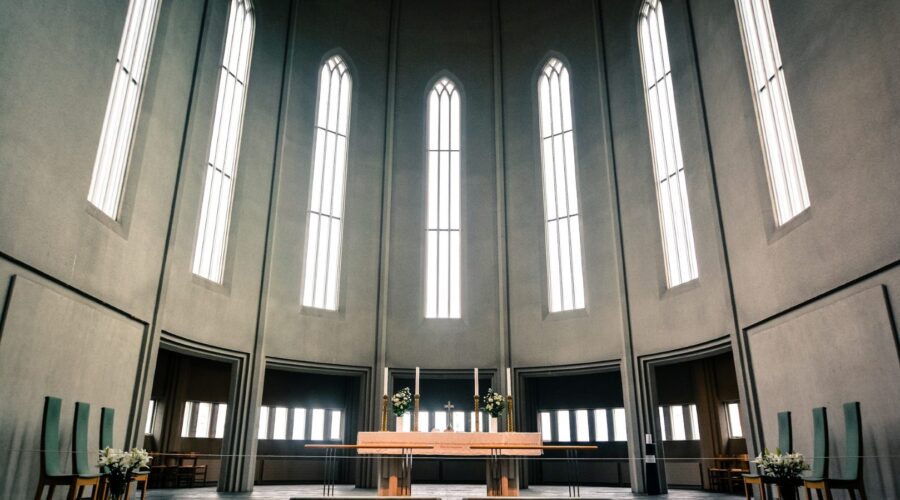
Embark on a Pilgrimage to Epiphany Catholic Church: A Haven of Faith and Community
Nestled in the heart of Dunwoody, Georgia, Epiphany Catholic Church stands as a beacon of faith and a cornerstone of the local community. Rooted in a rich history and guided by unwavering principles, Epiphany has become a spiritual oasis where individuals find solace, inspiration, and a sense of belonging.
A Historical Tapestry: Epiphany’s Genesis and Growth
Epiphany’s story traces its origins back to 1977, when a small group of Catholics gathered in a modest chapel to worship and share their faith. As the congregation grew, a need arose for a larger and more permanent home. In 1992, ground was broken for the construction of the current church building, which was solemnly consecrated in 1994.
Over the decades, Epiphany has undergone several expansions and renovations to accommodate its burgeoning membership. The church complex now encompasses a sanctuary, chapel, educational facilities, and a vibrant social hall. Each addition has been meticulously designed to enhance the spiritual experience and foster a welcoming environment for all.
Nurturing Faith: A Multifaceted Ministry
At Epiphany, faith is not simply a belief but a dynamic and transformative journey. The church’s extensive ministry programs cater to the spiritual needs of individuals and families of all ages:
Sacramental Life:
- Regular celebration of Mass, the central sacrament of Catholic life
- Penance and Reconciliation, offering spiritual guidance and forgiveness
- Baptism, welcoming infants and adults into the Catholic faith
- Holy Eucharist, the reception of Christ in Communion
- Confirmation, strengthening and confirming the gifts of the Holy Spirit
Education and Formation:
- Comprehensive religious education programs for children and adults
- Retreats and workshops, providing opportunities for spiritual growth
- Adult faith formation groups, fostering ongoing theological and moral reflection
Service and Outreach:
- Various ministries addressing the needs of the poor and marginalized
- Homebound visitation, bringing the sacraments and companionship to those unable to attend church
- Prison ministry, offering spiritual support and rehabilitation
A Vibrant Community: Beyond the Sanctuary
Epiphany is not merely a place of worship but a vibrant community where parishioners connect, grow, and support one another:
- Social Events: Regular gatherings, potlucks, and retreats foster fellowship and create a sense of belonging.
- Volunteer Opportunities: Members actively participate in various ministries and committees, contributing their time and talents.
- Youth Ministry: Comprehensive programs tailored to the spiritual and social needs of children, teens, and young adults.
- Senior Ministry: Dedicated programs and services for older adults, offering spiritual support and social engagement.
Practical Information for Visitors and Members
Whether you are a first-time visitor or a cherished member of the Epiphany family, here are some helpful details to enhance your experience:
Mass Schedule:
Day Time Monday – Friday 8:15 AM Saturday 5:00 PM Sunday 8:00 AM, 10:00 AM, and 12:00 PM Contact Information:
- Address: 2309 Peachtree Rd NE, Atlanta, GA 30345
- Phone: (404) 237-7774
- Official Website
- Email: [email protected]
Embracing Epiphany: A Journey of Faith and Community
Epiphany Catholic Church is more than a building; it is a vibrant community where individuals encounter the divine, forge meaningful connections, and serve those in need. Whether you are a lifelong Catholic or someone seeking spiritual guidance, Epiphany welcomes you with open arms.
Join us for Mass, explore our educational programs, or lend a helping hand through our volunteer opportunities. At Epiphany, you will discover a true home where faith, community, and service intertwine to create a transformative journey.
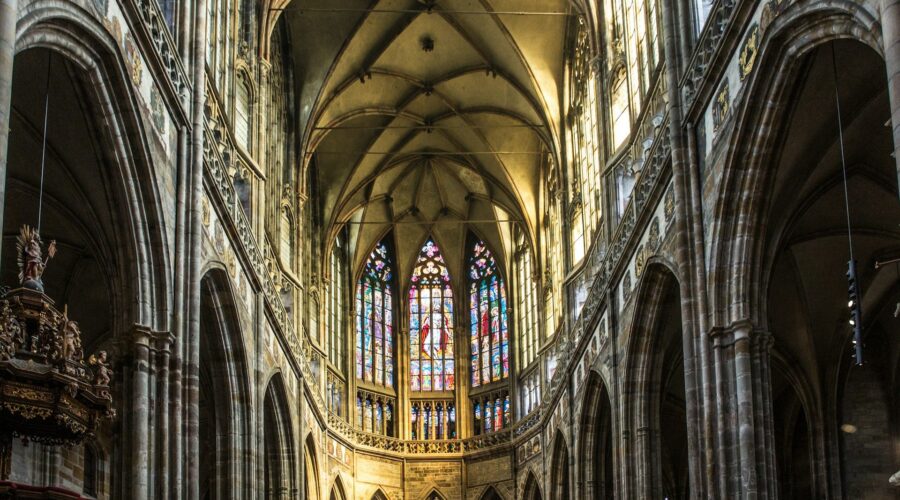
Unveiling the Adventist Religion: Beliefs, Practices, and History
Introduction
The Adventist movement, with its distinct beliefs and practices, has made a significant impact on Christianity. In this comprehensive guide, we delve into the fascinating world of Adventism, exploring its origins, fundamental doctrines, worship practices, and modern-day presence.
Origins and History
William Miller and the Great Disappointment
The Adventist movement traces its roots to William Miller, a Baptist preacher. He predicted the Second Coming of Jesus Christ on October 22, 1844, based on chronological interpretations of biblical prophecy. This event, known as the “Great Disappointment,” when Christ didn’t return, shook the movement but led to the emergence of various Adventist denominations.
Early Church Development
After the Millerite movement, smaller groups emerged, including the Seventh-day Adventist Church (SDA) and other smaller denominations. These groups emphasized the Sabbath, a core Adventist belief, and various theological doctrines based on the Bible.
Core Beliefs
The Trinity
Adventists believe in the Triune God: Father, Son (Jesus Christ), and Holy Spirit. They view Jesus as both divine and human, the Son of God who died on the cross for the salvation of humanity.
The Sabbath
The Sabbath, the seventh day of the week, holds special significance in Adventism. Adventists believe it is a day of rest, worship, and time spent with God, as commanded in the fourth commandment of the Ten Commandments.
The Second Coming
Adventists eagerly anticipate the Second Coming of Jesus Christ, which they believe is imminent. They hold a premillennial view, believing that Christ will return to establish a millennial reign on Earth after a period of tribulation.
Health and Diet
Adventists place great importance on health and well-being. They advocate for a plant-based diet, abstaining from alcohol, tobacco, and other harmful substances. They also emphasize physical exercise and rest, promoting a balanced lifestyle.
Worship Practices
Worship Services
Adventist worship services typically include music, prayers, Bible study, and a sermon. They emphasize personal involvement and Bible-based teachings.
Communion
Adventists observe the Lord’s Supper (Communion) quarterly. They view it as a sacred ordinance symbolizing Christ’s sacrifice and unity among believers.
Denominations
Seventh-day Adventist Church (SDA)
The largest Adventist denomination is the Seventh-day Adventist Church (SDA), with over 25 million members worldwide. It is known for its emphasis on the second coming, the Sabbath, and health.
Other Adventist Denominations
Other Adventist denominations include the Advent Christian Church, Life and Health Church, and the United Church of God. They share similar beliefs but may differ in certain practices and teachings.
Modern-Day Adventism
Global Presence
Today, Adventists have a global presence, with churches, schools, hospitals, and other institutions established in various regions of the world. They are known for their humanitarian work and commitment to education.
Education
Adventists prioritize education, operating a worldwide network of schools and higher education institutions. They believe in the importance of critical thinking, service to others, and lifelong learning.
Health Care
Adventist hospitals and health clinics provide high-quality health care services to communities around the world. They focus on preventive medicine, promoting healthy lifestyles and holistic healing.
Conclusion
The Adventist religion is a multifaceted and dynamic movement that has shaped Christianity in many ways. Its unique beliefs, practices, and commitment to health and education have set it apart from other Christian denominations. Whether through its global presence or its emphasis on spiritual growth, Adventism continues to play a significant role in the religious landscape.
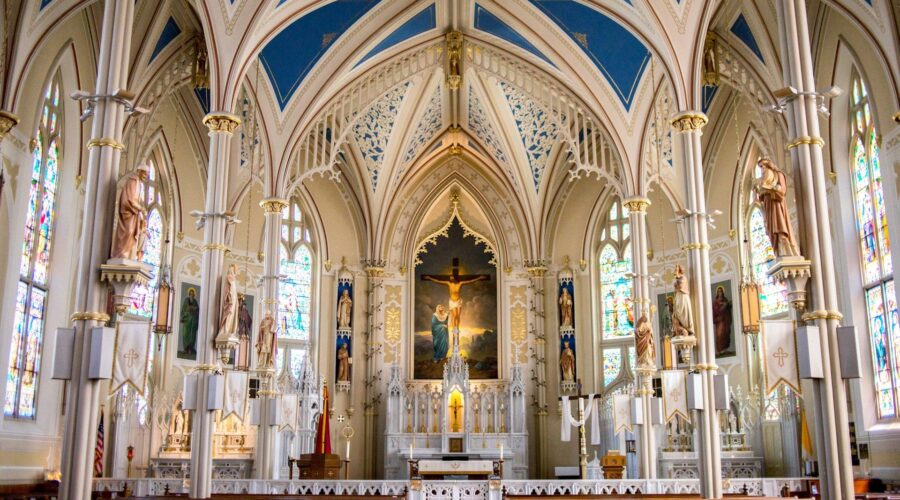
The Word “Church”: A Comprehensive Guide to Its Meaning and Significance
Introduction
The word “church” is a common one, but it can have a variety of meanings depending on the context in which it is used. It can refer to a building, a group of people, or an institution. It can also be used in a figurative sense to refer to the body of Christ or the kingdom of God. In this blog post, we will explore the different meanings of the word “church” and discuss its significance in the Christian faith.
The Church as a Building
The word “church” is often used to refer to a building where Christians gather for worship. These buildings can vary in size and style, but they typically have some common features, such as a sanctuary, a pulpit, and a baptismal font. Church buildings are often designed to be places of beauty and inspiration, and they can play an important role in the lives of Christians.
The Church as a Group of People
The word “church” can also refer to a group of people who have come together for the purpose of worshiping God. This group of people can be small or large, and it can meet in a variety of settings, such as a home, a church building, or a park. The church as a group of people is often referred to as the “body of Christ” because it is made up of all those who have been baptized into Christ.
The Church as an Institution
The word “church” can also refer to an institution that has been established to support the Christian faith. This institution can include a variety of organizations, such as denominations, seminaries, and mission agencies. The church as an institution plays an important role in the spread of the gospel and the care of Christians.
The Church in a Figurative Sense
The word “church” can also be used in a figurative sense to refer to the body of Christ or the kingdom of God. The body of Christ is the universal church, made up of all those who have been baptized into Christ. The kingdom of God is the realm of God’s rule and authority, which is present in the world today and will be fully realized in the future.
The Significance of the Church
The church is a significant part of the Christian faith. It is a place where Christians can gather for worship, fellowship, and instruction. It is also a place where Christians can serve others and grow in their faith. The church is a vital part of God’s plan for the world, and it plays an important role in the spread of the gospel and the transformation of society.
Conclusion
The word “church” has a variety of meanings, but it always refers to something that is related to the Christian faith. The church is a building, a group of people, an institution, and a body of Christ. It is a place where Christians can gather for worship, fellowship, and instruction. It is also a place where Christians can serve others and grow in their faith. The church is a vital part of God’s plan for the world, and it plays an important role in the spread of the gospel and the transformation of society.
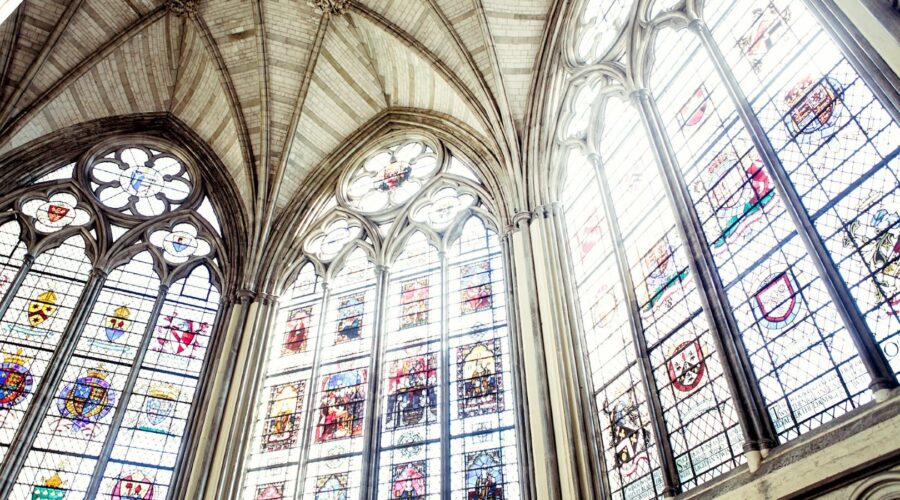
Discover the Captivating History and Significance of Saint Patrick Church
Immerse yourself in the rich tapestry of faith, heritage, and architectural splendor that is Saint Patrick Church. This iconic landmark has stood as a testament to the enduring spirit of the Irish Catholic community for centuries, leaving an indelible mark on the religious and cultural landscape.
A Journey Through Time: Tracing the History of Saint Patrick Church
Humble Beginnings: The Founding Years
The origins of Saint Patrick Church can be traced back to the year 1841 when a group of devout Irish immigrants established a parish in the bustling city of San Francisco, California. With unwavering faith and limited resources, they erected a modest wooden structure that served as their humble place of worship.
Growth and Expansion: A Reflection of Faith and Community
As the Irish community grew and prospered, so did Saint Patrick Church. In 1860, a larger and more permanent structure was constructed, reflecting the unwavering commitment of its congregation. This brick building, with its Gothic Revival architecture and graceful steeple, became a symbol of pride and a testament to the enduring faith of the Irish Catholic community.
Reconstruction and Renewal: A Legacy Preserved
Disaster struck in 1906 when the great earthquake and fire ravaged San Francisco, including Saint Patrick Church. From the ashes, the church was rebuilt, this time with an imposing Romanesque Revival design. This magnificent structure, boasting a soaring bell tower and intricate stained-glass windows, stands as a testament to the resilience and determination of the congregation.
Architectural Splendor: A Symphony of Beauty and Faith
A Romanesque Revival Masterpiece
Saint Patrick Church is a masterpiece of Romanesque Revival architecture, characterized by its robust construction, rounded arches, and intricate ornamentation. The exterior features a russet-colored sandstone facade adorned with carved reliefs depicting scenes from Irish history and religious iconography.
Soaring Spires and Graceful Arches
The towering bell tower, a beacon of faith, dominates the skyline and houses a set of ten bells that chime melodiously throughout the neighborhood. Inside, the church’s spacious nave is defined by graceful arches, massive columns, and a vaulted ceiling adorned with intricate frescoes.
A Vibrant Community: Faith, Fellowship, and Service
A Spiritual Oasis in the Heart of San Francisco
Saint Patrick Church is not merely a historical landmark but a thriving center of spiritual growth and community engagement. The parish offers a wide range of services, including daily Mass, sacraments, and religious education programs.
A Hub for Social and Cultural Events
Beyond its religious mission, Saint Patrick Church serves as a vibrant hub for social and cultural events. The church hosts concerts, lectures, and festivals, fostering a sense of community and celebrating the rich Irish heritage of the neighborhood.
Embracing the Immigrant Experience
Throughout its history, Saint Patrick Church has played a vital role in supporting Irish immigrants. It has provided spiritual guidance, social services, and a sense of belonging to those who crossed the ocean in search of a new home.
Visiting Saint Patrick Church: A Guide for Visitors
Guided Tours: Unveiling the Sanctuary’s Secrets
To fully appreciate the beauty and significance of Saint Patrick Church, guided tours are available during designated hours. Docents will lead visitors through the sanctuary, providing insights into its history, architecture, and symbolism.
Mass and Sacrament Services: A Time for Reflection
Visitors are welcome to attend daily Mass or participate in the sacrament of reconciliation, offering a unique opportunity for spiritual reflection and connection with the community.
Explore the Neighborhood: A Glimpse of Irish Heritage
The neighborhood surrounding Saint Patrick Church is steeped in Irish history and culture. Take a stroll down Clement Street, visit the Irish Cultural Center, or grab a bite to eat at an authentic Irish pub, immersing yourself in the vibrant tapestry of Irish life in San Francisco.
Frequently Asked Questions
When was Saint Patrick Church founded?
Saint Patrick Church was founded in 1841.
What is the architectural style of Saint Patrick Church?
Saint Patrick Church was constructed in the Romanesque Revival style.
What are the visiting hours for Saint Patrick Church?
Guided tours are available during designated hours, typically on weekends.
Is there a cost for guided tours?
Guided tours are typically offered free of charge.
Can I attend Mass or other sacraments at Saint Patrick Church?
Yes, visitors are welcome to attend daily Mass or participate in the sacrament of reconciliation.
Conclusion: A Legacy of Faith and Community
Standing tall in the heart of San Francisco, Saint Patrick Church continues to serve as a beacon of faith, a symbol of Irish heritage, and a vibrant center for community engagement. Its rich history, architectural splendor, and welcoming atmosphere make it a must-visit destination for anyone interested in the religious and cultural legacy of the city. Whether you are seeking spiritual inspiration, historical insights, or a glimpse into the vibrant Irish culture, Saint Patrick Church offers an unforgettable experience that will leave a lasting impression.
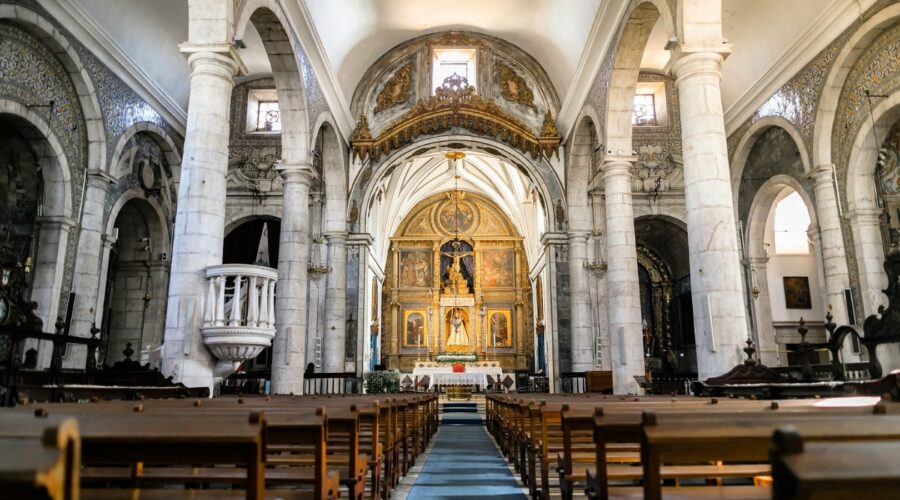
Find the Best Greek Orthodox Church Near You: A Comprehensive Guide
Introduction
The Greek Orthodox Church is a vibrant and ancient Christian tradition with a rich history and a global presence. If you’re looking for a Greek Orthodox church near you, this guide will provide you with all the information you need to find the perfect fit for your spiritual needs.
How to Find a Greek Orthodox Church
There are several ways to find a Greek Orthodox church near you:
- Online search: Search for “Greek Orthodox church near me” using a search engine like Google or Bing.
- Church directory: Visit the website of the Greek Orthodox Archdiocese of America (goarch.org) and use the church directory to search for churches in your area.
- Ask a friend or family member: If you know someone who is Greek Orthodox, they may be able to recommend a church to you.
- Visit a local Orthodox bookstore: Orthodox bookstores often have directories or maps of local churches.
What to Look for in a Greek Orthodox Church
When choosing a Greek Orthodox church, it’s important to consider your own spiritual needs and preferences. Here are some things to look for:
- Authenticity: Make sure the church is a genuine Greek Orthodox church, with clergy who are ordained in the Greek Orthodox tradition.
- Community: Choose a church with a welcoming and supportive community that you feel comfortable being a part of.
- Services: Find a church that offers services that fit your schedule and spiritual needs.
- Location: Consider the location of the church and how easy it is for you to get there.
Helpful Tips
Here are some helpful tips for finding a Greek Orthodox church near you:
- Attend a service: The best way to get to know a church is to attend a service. This will give you a chance to experience the worship and meet the clergy and parishioners.
- Talk to the priest: The priest is the spiritual leader of the church and can answer your questions about the church’s history, beliefs, and practices.
- Get involved in the community: Attending social events and participating in church activities is a great way to get to know the church and its members.
Conclusion
Finding the right Greek Orthodox church for you is an important decision. By following the tips in this guide, you can find a church that meets your spiritual needs and provides you with a welcoming and supportive community.
Additional Resources

Discover the Rich History and Vibrant Community of St. Thomas More Parish
Introduction
Nestled in the heart of Sarasota, Florida, St. Thomas More Parish stands as a beacon of faith, community, and service. With over 60 years of history, the parish has played a vital role in shaping the spiritual and social landscape of the region. This comprehensive blog post will delve into the fascinating story of St. Thomas More Parish, exploring its rich past, dynamic present, and bright future.
Our Humble Beginnings (1959-1964)
The seeds of St. Thomas More Parish were sown in the late 1950s when a small group of Catholic families recognized the need for a new parish in Sarasota. They purchased a plot of land on Bee Ridge Road and began fundraising for the construction of a church. On April 26, 1959, the Most Reverend Coleman F. Carroll, Bishop of Miami, blessed the cornerstone of the new church.
The Parish Takes Root (1964-1980)
On December 20, 1964, St. Thomas More Church was dedicated and officially established as a parish. The early years were marked by a spirit of growth and enthusiasm as parishioners worked together to build a vibrant community. The parish school, St. Thomas More Catholic School, opened its doors in 1967 to serve the educational needs of the growing Catholic population.
- In 1971, the parish purchased additional land and began construction on a new parish center.
- In 1974, the Most Reverend Charles B. McLaughlin, Bishop of St. Petersburg, dedicated the new parish center.
- In 1980, the parish hall was expanded to accommodate the growing number of parishioners.
A Time of Transformation (1980-2000)
The 1980s and 1990s witnessed significant changes for St. Thomas More Parish. The parish celebrated its 25th anniversary in 1984, marking a quarter-century of service to the community. In 1997, the church was renovated and expanded to meet the needs of the growing congregation. St. Thomas More School also underwent renovations, adding new classrooms and facilities.
The Parish Today
Today, St. Thomas More Parish is a thriving community of over 3,000 families. The parish offers a wide range of ministries, including:
Website
- Liturgical ministries, such as Mass servers, altar servers, and liturgical music.
- Sacramental ministries, such as Baptism, Reconciliation, and Matrimony.
- Educational ministries, such as religious education programs and adult faith formation.
- Service ministries, such as outreach to the poor and homebound, and support for the sick and elderly.
The Future of St. Thomas More Parish
As St. Thomas More Parish looks towards the future, it remains committed to its mission of serving the spiritual and social needs of the community. The parish has plans for continued growth and expansion, including:
Project Timeline Renovation of the church sanctuary 2024 Expansion of the parish center 2026 Construction of a new athletic field 2028 Conclusion
St. Thomas More Parish is a vibrant and growing community of faith, service, and love. With a rich history and a bright future, the parish is poised to continue playing a vital role in the spiritual and social life of Sarasota for many years to come. We invite you to join our community and experience the joy and fulfillment of being a part of St. Thomas More Parish.

Discover the Little Flower Catholic Church: A Sanctuary of Faith and Inspiration
A Haven of Spirituality
Nestled amidst the bustling city, Little Flower Catholic Church stands as a beacon of faith and spirituality. Its doors beckon believers from all walks of life, inviting them to immerse themselves in a sacred space where they can connect with the divine and find solace in the midst of life’s challenges.
A Rich History
The church’s story begins in the early 20th century, a time of rapid urbanization and social upheaval. A small group of Catholic immigrants yearned for a place of worship that reflected their cultural and spiritual heritage. In response to this need, Little Flower Catholic Church was established in 1903.
Over the decades, the church has grown and evolved, becoming a vital part of the community. It has witnessed countless baptisms, marriages, and funerals, serving as a cornerstone of faith for generations of families.
Architectural Marvel
Little Flower Catholic Church is renowned for its stunning architecture, a blend of Romanesque and Gothic styles. Its towering spires and intricate stained-glass windows create an awe-inspiring setting that complements the sacred rituals performed within its walls.
Vibrant Community
Beyond its physical presence, Little Flower Catholic Church is a vibrant and welcoming community. It offers a wide range of programs and services designed to nurture the spiritual growth of its members.
- Regular Masses and prayer services
- Religious education programs for children and adults
- Bible study groups and retreats
- Community outreach initiatives serving those in need
Special Devotions
Little Flower Catholic Church has a special devotion to Saint Thérèse of Lisieux, also known as the Little Flower. Saint Thérèse is beloved for her simplicity, humility, and unwavering faith. Her example inspires countless pilgrims who visit the church to seek her intercession and guidance.
Feast Day Celebrations
Every October 1st, the church celebrates Saint Thérèse’s feast day with a special Mass and procession. Devotees gather to honor her life and legacy, and to pray for her intercession in their own lives.
Community Outreach
Little Flower Catholic Church is deeply committed to serving the broader community. Its outreach programs include:
- Food pantries and soup kitchens
- Shelters for the homeless
- Counseling and support services for families and individuals in crisis
Through these initiatives, the church strives to embody the teachings of Christ by providing compassion, support, and dignity to those in need.
How to Visit
Little Flower Catholic Church is located at [address]. Visitors are welcome to attend Mass and other services, or to simply explore its beautiful architecture and peaceful surroundings.
For more information or to learn about upcoming events, please visit the church’s website at [website address] or call [phone number].
Frequently Asked Questions
Here are answers to some frequently asked questions about Little Flower Catholic Church:
- What time are Masses held? There are multiple Mass times available throughout the week and on weekends. Please check the church’s website or call the parish office for specific times.
- Can non-Catholics attend Mass? Yes, non-Catholics are welcome to attend Mass as observers and to share in the spirit of worship.
- How do I become a member of the parish? Contact the parish office for information on the registration process and membership requirements.
Conclusion
Little Flower Catholic Church is a beacon of faith, spirituality, and community. Its rich history, stunning architecture, and vibrant programs offer a sanctuary for believers and a source of inspiration for all who seek a deeper connection to the divine. Whether you are a lifelong Catholic or simply curious about the Catholic faith, we invite you to visit Little Flower Catholic Church and experience its transformative power.
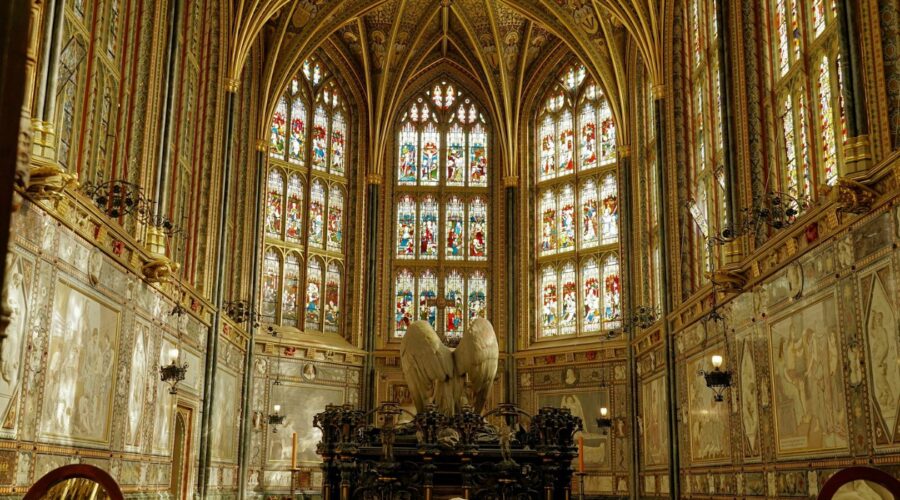
Our Lady of Perpetual Help Church: A Haven of Faith and Devotion
Introduction
Nestled amidst the bustling streets of Baltimore, Maryland, stands Our Lady of Perpetual Help Church, a cornerstone of the Catholic faith and a sanctuary for countless souls seeking spiritual guidance and solace. Founded in 1871, this historic church has witnessed over a century of unwavering faith and devotion, serving as a beacon of hope for generations of parishioners.
History and Significance
The history of Our Lady of Perpetual Help Church is intertwined with the rise of the Irish Catholic community in Baltimore. In the mid-19th century, a large influx of Irish immigrants flocked to the city, seeking a better life in America. They brought with them their strong faith and a desire to establish a parish of their own.
In 1866, Father Patrick McManus, a Redemptorist missionary, purchased land on the corner of Light and Davis Streets. On August 13, 1871, the cornerstone of Our Lady of Perpetual Help Church was laid, and the church was formally dedicated in 1873. Over the years, the church underwent several expansions and renovations, including the addition of a school and a convent.
Architecture and Design
Our Lady of Perpetual Help Church is a magnificent example of Gothic Revival architecture. Its exterior features soaring spires, pointed arches, and intricate stone carvings. The interior of the church is equally impressive, with its high vaulted ceilings, stained glass windows, and ornate altars.
Notable Architectural Features:
- Twin Spires: The church’s twin spires are a prominent landmark in the neighborhood and can be seen from miles around.
- Pointed Arches: The church’s pointed arches are characteristic of Gothic architecture and create a sense of height and grandeur.
- Stained Glass Windows: The church’s stained glass windows depict scenes from the Bible and the lives of saints, flooding the interior with vibrant colors.
- High Altar: The high altar is the focal point of the church and is adorned with elaborate carvings and a beautiful painting of Our Lady of Perpetual Help.
Devotion to Our Lady of Perpetual Help
Our Lady of Perpetual Help Church is named in honor of the venerated icon of Our Lady of Perpetual Help, known throughout the world for its miraculous powers. The icon depicts Mary holding the Christ Child, who is looking at Saint Joseph for comfort. The icon is believed to have originated in Crete in the 15th century and was brought to Rome in the 1860s.
Devotion to Our Lady of Perpetual Help has flourished at the church since its founding. Parishioners have reported countless graces and miracles through the intercession of Our Lady. The church has become a popular destination for pilgrims seeking spiritual assistance and healing.
Parish Life and Activities
Our Lady of Perpetual Help Church is a vibrant and active parish with a wide range of ministries and programs for all ages.
Ministries:
- Altar Servers: Young people assist the priest during Mass.
- Eucharistic Ministers: Parishioners distribute Holy Communion at Mass.
- Lectors: Parishioners read the Scripture readings at Mass.
- Music Ministry: The church has a choir, a cantors’ program, and instrumentalists who enhance the liturgy with their musical talents.
- Outreach Ministries: The church supports various outreach programs, including a soup kitchen, a homeless shelter, and a nursing home ministry.
Activities:
- Religious Education: The church offers religious education classes for children and adults.
- Bible Studies: The church hosts weekly Bible studies for parishioners to deepen their faith.
- Youth Group: The church has a vibrant youth group that provides faith formation and social activities for young people.
- Choir: The church’s choir rehearses weekly and performs at Masses, weddings, and other special occasions.
- Parishioner Socials: The church hosts various social events throughout the year, such as parish picnics, potlucks, and dances.
Community Impact
Our Lady of Perpetual Help Church has played a significant role in the Baltimore community for over 150 years. The church provides spiritual guidance, support, and a sense of belonging to its parishioners.
Beyond its religious mission, the church has been a beacon of hope and support during times of crisis. In the aftermath of the Great Baltimore Fire of 1904, the church served as a temporary shelter for the homeless. During World War II, the church offered prayers and support to the soldiers and their families.
Visiting the Church
Our Lady of Perpetual Help Church is open to visitors daily for prayer and meditation. Guided tours are available upon request. The church is located at 1225 Light Street, Baltimore, MD 21230.
Mass Times Day Time Monday 8:00 AM Tuesday 8:00 AM Wednesday 8:00 AM Thursday 8:00 AM Friday 8:00 AM Saturday 8:00 AM, 4:00 PM Sunday 8:00 AM, 10:00 AM, 12:00 PM, 5:00 PM Conclusion
Our Lady of Perpetual Help Church is more than just a building; it is a living testament to the power of faith. For generations, this historic church has served as a sanctuary for the faithful, offering spiritual guidance, solace, and a sense of community. Its devotion to Our Lady of Perpetual Help has inspired countless miracles and graces, making it a beacon of hope for all who seek her intercession.
Whether you are a lifelong parishioner or a curious visitor, Our Lady of Perpetual Help Church welcomes you with open arms. Come and experience the beauty, history, and spirituality of this beloved Baltimore landmark.
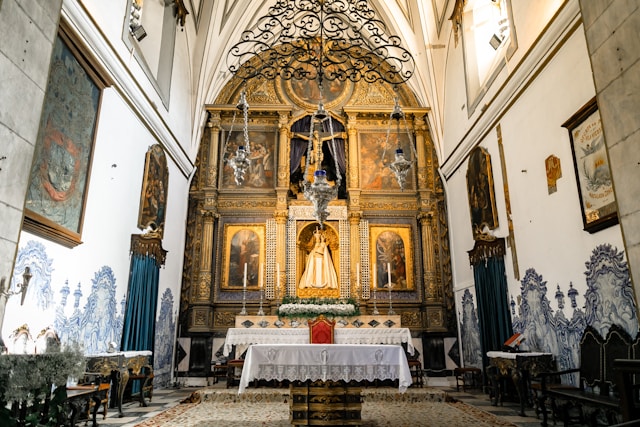
Plan Your Church Services Seamlessly with Planning Center Online
Planning Center Online (PCO) is a comprehensive church management software suite that streamlines a wide range of administrative and operational tasks, empowering churches to run more effectively and efficiently. In this blog post, we will delve into the key features of PCO and explore how it can transform your church’s planning and management processes.
Key Features of Planning Center Online
1. Service Planning
* Create and manage worship services with ease, including scheduling songs, sermons, announcements, and other elements.
* Collaborate with your team in real-time to plan services and make last-minute changes.
* Use pre-built templates to save time and ensure consistency in service planning.2. People Management
* Maintain a centralized database of your congregation members, including contact information, demographics, and attendance records.
* Track and manage giving and donations through an integrated giving module.
* Send automated emails and text messages to keep your members informed and engaged.3. Group Management
* Create and manage groups for various purposes, such as small groups, ministries, and volunteer teams.
* Track attendance and involvement for each group member.
* Send targeted communications and resources to specific groups.4. Event Management
* Plan and manage church events of all sizes, from small gatherings to large conferences.
* Sell tickets, collect RSVPs, and track registrations online.
* Use automated email reminders and check-in tools to streamline event management.5. Communication Tools
* Send church-wide emails, announcements, and newsletters with customizable templates.
* Create a church website and mobile app to connect with your congregation.
* Use social media integration to promote events and share updates with your followers.6. Reporting and Analytics
* Generate reports on attendance, giving, group involvement, and other key metrics.
* Use data to make informed decisions about ministry programs and strategies.
* Track trends and identify areas for improvement.Benefits of Using Planning Center Online
* Improved efficiency: Streamline your church’s operations and save time by automating tasks and centralizing data.
* Enhanced communication: Keep your congregation informed and engaged through targeted communications and a mobile app.
* Increased collaboration: Foster teamwork and collaboration among your staff and volunteer teams with real-time planning and communication tools.
* Data-driven decision-making: Use reporting and analytics to gain insights into your church’s ministry and make data-informed decisions.
* Simplified giving: Make it easy for your members to give online, track their donations, and receive tax receipts.How to Get Started with Planning Center Online
1. Visit the Planning Center Online website (https://planningcenteronline.com/) to create a free account.
2. Choose the subscription plan that best meets your church’s needs.
3. Customize your PCO account by adding your church’s information, uploading member data, and creating service plans.
4. Train your staff and volunteers on how to use the various features of PCO.
5. Start using PCO to plan services, manage people, communicate with your congregation, and track your church’s performance.Tips for Using Planning Center Online
* Use pre-built templates to save time and ensure consistency in your planning.
* Collaborate with your team in real-time to make planning more efficient.
* Track your church’s data to identify areas for improvement and make data-driven decisions.
* Use the mobile app to stay connected with your congregation and manage tasks on the go.
* Attend training webinars and explore the Planning Center Online support resources to get the most out of the software.Conclusion
Planning Center Online is a powerful and comprehensive church management software that can transform the way your church operates. By streamlining planning, managing people, communicating with your congregation, and tracking your church’s performance, PCO can help you save time, improve efficiency, and grow your ministry.